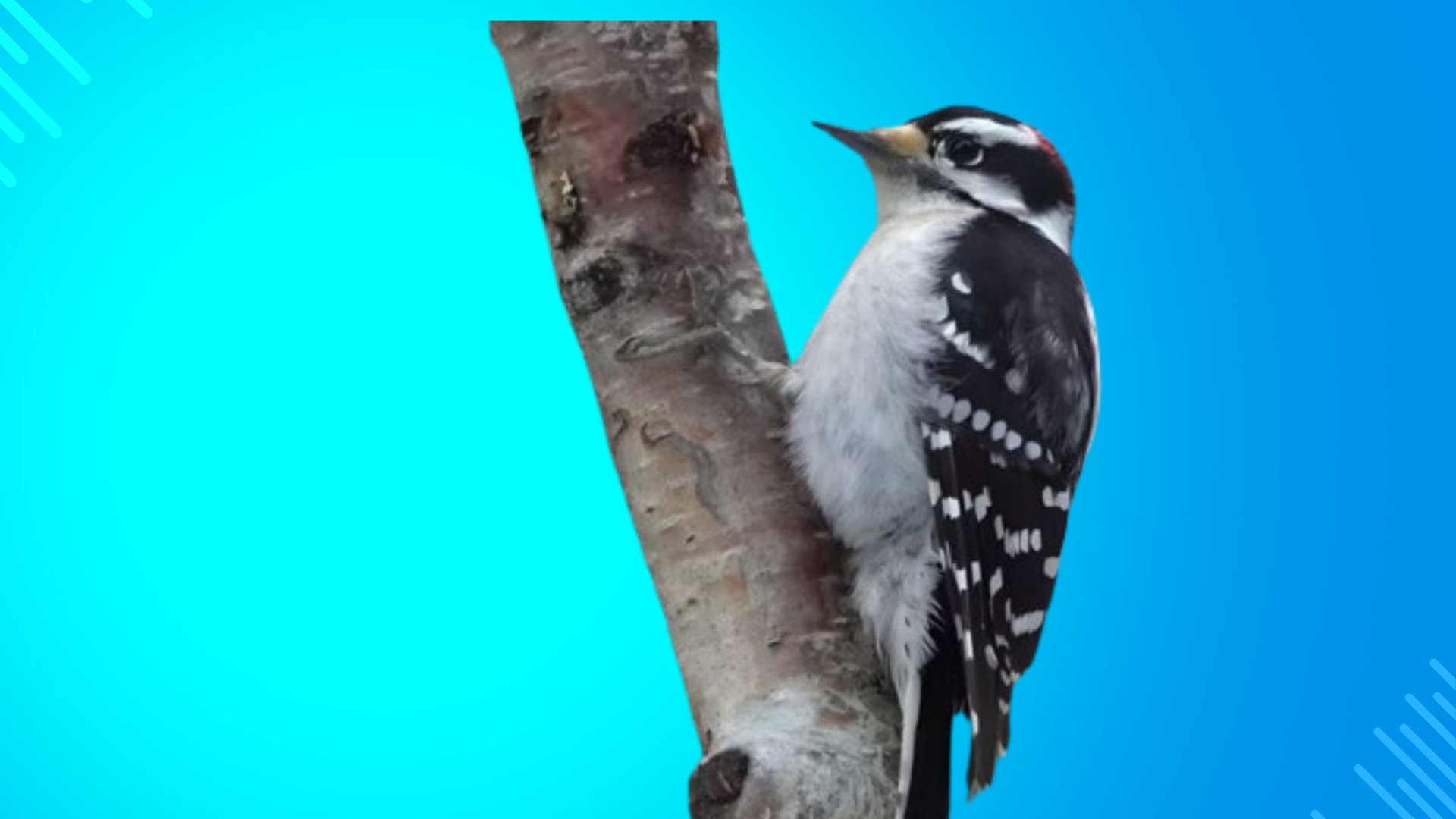Woodpeckers play a big role in Michigan’s nature. They are very important for many reasons:
- Pest Control: Woodpeckers eat lots of insects. They especially like beetles and ants that can harm trees. By eating these bugs, woodpeckers help keep forests healthy.
- Home Builders: When woodpeckers make holes in trees, they create homes. After they leave, other animals like birds, squirrels, and bats use these holes to live in.
- Food Web: Woodpeckers are food for some bigger birds, like hawks. This makes them an important part of the food chain in Michigan’s forests.
- Tree Doctors: As woodpeckers peck on dead or dying trees, they help these trees break down faster. This helps nutrients return to the soil, which is good for new plants.
- Forest Health Indicators: The number of woodpeckers in an area can tell us about the health of the forest. If there are many woodpeckers, it usually means the forest is doing well.
- Seed Spreaders: Some woodpeckers eat fruits and nuts. As they fly around, they spread seeds, helping new plants grow in different areas.
Conservation Status
Most woodpeckers in Michigan are doing okay right now. Here’s what you should know about their conservation status:
- Common Species: Many woodpeckers, like the Downy, Hairy, and Red-bellied Woodpeckers, are common in Michigan. These birds are not in danger and can be seen in many places.
- Habitat Changes: Some woodpeckers face challenges when forests are cut down or changed. They need trees to live and find food.
- Protected Areas: Michigan has many parks and protected forests. These areas help woodpeckers and other wildlife stay safe.
- Red-headed Woodpecker: This bird is less common than it used to be. It needs special habitats like open woodlands, which are becoming harder to find.
- Pileated Woodpecker: While not in danger, this big woodpecker needs large, old trees. Protecting mature forests is important for them.
- Helping Woodpeckers: People can help woodpeckers by putting up nest boxes, leaving dead trees standing when safe, and using fewer pesticides.
- Watching and Counting: Bird watchers and scientists keep track of woodpecker numbers. This helps us know if any species start to have problems.
Overall, Michigan’s woodpeckers are doing fine, but it’s important to keep protecting their homes in the forests and parks.
Conservation Efforts
People in Michigan are working to help woodpeckers in several ways:
- Protecting Forests: The state is keeping large areas of forest safe. This gives woodpeckers places to live and find food.
- Leaving Dead Trees: When it’s safe, people are leaving some dead trees standing in forests and parks. These “snags” are great homes for woodpeckers.
- Building Nest Boxes: Some people put up special wooden boxes for woodpeckers to nest in. This helps when there aren’t enough natural tree holes.
- Planting Trees: Groups are planting new trees in areas where forests were cut down. This will give woodpeckers more homes in the future.
- Watching Birds: Many people count and report the woodpeckers they see. This helps scientists know how the birds are doing.
- Teaching People: Parks and nature centers teach visitors about woodpeckers. This helps people understand why these birds are important.
- Limiting Pesticides: Farmers and gardeners are using fewer bug-killing chemicals. This leaves more insects for woodpeckers to eat.
- Making Wildlife Corridors: People are connecting separate wooded areas. This lets woodpeckers move safely between different forests.
MyFastBroker Trading Platforms: A Comprehensive Guide
How to Attract Woodpeckers to Your Backyard
- Put up bird feeders: Hang feeders with foods woodpeckers like. They enjoy suet cakes, peanuts, and black oil sunflower seeds.
- Leave dead trees: If it’s safe, keep dead trees or large branches in your yard. Woodpeckers use these for food and nesting.
- Plant native trees: Grow trees that woodpeckers like, such as oak, maple, or cherry trees. These provide natural food and homes.
- Offer water: Set up a birdbath or small fountain. Woodpeckers need water for drinking and bathing.
- Hang special feeders: Use feeders that let woodpeckers cling while eating, like suet cage feeders or long tube feeders.
- Avoid pesticides: Don’t use chemicals that kill insects in your yard. Woodpeckers eat these bugs and need them for food.
- Put up nest boxes: Hang woodpecker-specific nest boxes on trees or poles. Make sure they’re the right size for the types of woodpeckers in your area.
- Keep cats inside: Cats can scare away or hurt woodpeckers. Keeping them indoors makes your yard safer for birds.
- Be patient: It might take time for woodpeckers to find your yard. Keep your feeders full and your yard friendly, and they’ll likely come.
Conclusion
Michigan is a great place for woodpeckers. These special birds come in different sizes and colors, from the small Downy Woodpecker to the big Pileated Woodpecker. They help keep our forests healthy by eating bugs that can hurt trees. Woodpeckers also make homes for other animals when they peck holes in trees.
Many people in Michigan enjoy watching these birds in parks, forests, and even their own backyards. Taking care of woodpeckers is important. We can do this by protecting forests, leaving some dead trees standing, and putting up bird feeders. Scientists and bird watchers keep track of how many woodpeckers there are to make sure they’re doing okay.
By learning about woodpeckers and helping them, we can make sure these amazing birds will be around for a long time. Whether you’re a bird expert or just someone who likes to watch nature, woodpeckers are an exciting part of Michigan’s wildlife. If you need more info then visit this page.

